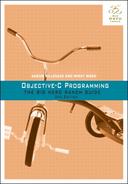If you need a number with a decimal point, like 3.2, you use a floating-point number. Most programmers think of a floating-point number as a mantissa multiplied by 10 to an integer exponent. For example, 345.32 is thought of as 3.4532 x 102. And this is essentially how they are stored: a 32-bit floating number has 8 bits dedicated to holding the exponent (a signed integer) and 23 bits dedicated to holding the mantissa, with the remaining 1 bit used to hold the sign.
Like integers, floating-point numbers come in several sizes. Unlike integers, floating-point numbers are always signed:
float g; // 32 bits double h; // 64 bits long double i; // 128 bits
printf() can also display floating point numbers, most commonly using the tokens %f and %e. In main.c, replace the integer-related code:
int main (int argc, const char * argv[])
{
double y = 12345.6789;
printf("y is %fn", y);
printf("y is %en", y);
return 0;
}
When you build and run it, you should see:
y is 12345.678900 y is 1.234568e+04
So %f uses normal decimal notation, and %e uses scientific notation.
Notice that %f is currently showing 6 digits after the decimal point. This is often a bit much. Limit it to two digits by modifying the token:
int main (int argc, const char * argv[])
{
double y = 12345.6789;
printf("y is %.2fn", y);
printf("y is %.2en", y);
return 0;
}
When you run it, you should see:
y is 12345.68 y is 1.23e+04
If you will be doing a lot of math, you will need the math library. To see what is in the math library, open the Terminal application on your Mac and type man math. You will get a great summary of everything in the math library: trigonometry, rounding, exponentiation, square and cube root, etc.
If you use any of these math functions in your code, be sure to include the math library header at the top that file:
#include <math.h>
One warning: all of the trig-related functions are done in radians, not degrees!
